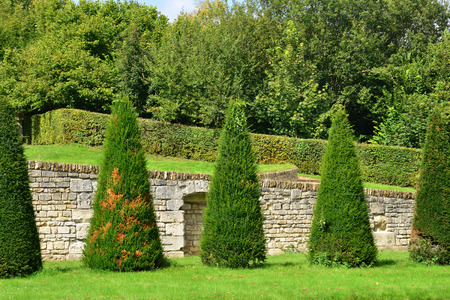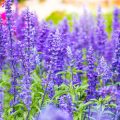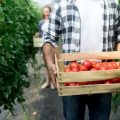Introduction to Natural Habitats in British Gardens
Creating natural habitats within British gardens is becoming increasingly important for the health of our environment. By introducing features such as ponds, hedgerows, and meadows, garden owners can provide vital spaces for local wildlife. These natural areas not only attract birds, bees, frogs, and hedgehogs but also contribute to the overall biodiversity of neighbourhoods across the UK. Supporting native plants and animals helps to restore ecological balance, making gardens more resilient and lively. Whether your outdoor space is large or small, weaving in elements of wild nature can transform your garden into a sanctuary for both people and wildlife, while also enhancing its beauty and character.
Benefits of Ponds, Hedgerows, and Meadows
Integrating ponds, hedgerows, and meadows into your British garden brings a wealth of ecological and aesthetic advantages. These natural habitats support the health of local ecosystems, provide vital refuges for native species, and infuse outdoor spaces with a calming, picturesque atmosphere.
Ecosystem Health
Ponds, hedgerows, and meadows each play unique roles in improving biodiversity and maintaining a balanced environment. Ponds attract amphibians and aquatic insects, help regulate water flow, and support plant diversity. Hedgerows act as living corridors for birds and small mammals, connecting fragmented landscapes. Meadows foster wildflowers and pollinators such as bees and butterflies. Together, these features reduce soil erosion, enhance air quality, and promote healthy soil life.
Sanctuary for Native Species
Natural habitats are essential for British wildlife. Many native creatures have lost their homes due to modern landscaping and urban development. By adding ponds, hedgerows, or meadows to your garden, you provide safe nesting sites, food sources, and shelter from predators. The table below highlights some examples:
| Habitat Type | Species Benefited |
|---|---|
| Pond | Frogs, newts, dragonflies |
| Hedgerow | Sparrows, hedgehogs, field mice |
| Meadow | Bumblebees, butterflies, voles |
Tranquil Garden Atmosphere
Beyond ecological benefits, these habitats transform gardens into serene retreats. The gentle sound of water in a pond attracts songbirds and creates a soothing ambience. Hedgerows offer privacy with their lush greenery while providing seasonal interest through blossom and berries. Meadows sway gracefully in the breeze and burst into colour during summer months. Such features not only attract wildlife but also invite people to pause and appreciate the beauty of nature at home.

3. Designing and Building a Wildlife Pond
Step 1: Planning Your Pond
Start by choosing a sunny spot in your garden, away from overhanging trees to avoid excess leaf fall. The pond should be at least 60cm deep in one section to give amphibians a safe, frost-free refuge. Aim for an irregular shape with gently sloping sides—this helps creatures enter and exit easily. Decide on the size based on your available space; even a small pond can be valuable for wildlife.
Step 2: Digging and Lining
Mark out your pond’s shape with string or sand. Begin digging, creating shallows around the edge (about 15cm deep) and a deeper central area. Remove sharp stones from the base. For lining, use butyl rubber liners as they’re durable and wildlife-friendly. Place a layer of soft sand or old carpet underneath the liner to prevent punctures. Carefully drape the liner into place, pressing it into all contours, and trim off any excess material once filled.
Step 3: Filling Your Pond
If possible, fill your pond with rainwater, as tap water contains chemicals that can upset the balance of your new habitat. You can collect rainwater in barrels before adding it to the pond. Allow the pond to settle for a few days before planting.
Step 4: Planting for British Wildlife
Marginal Plants
Add native marginal plants like yellow flag iris (Iris pseudacorus), marsh marigold (Caltha palustris), and purple loosestrife (Lythrum salicaria). These thrive at the edges and provide cover for insects and amphibians.
Floating and Oxygenating Plants
Include floating plants such as frogbit (Hydrocharis morsus-ranae) and oxygenators like hornwort (Ceratophyllum demersum) to keep the water healthy and clear.
Pond Edge Planting
Around the pond edges, plant native grasses or wildflowers to create seamless transitions for wildlife. Avoid invasive species which can harm local ecosystems.
Step 5: Adding Features and Finishing Touches
Place stones or logs at one end to create basking spots for frogs and newts. Leave one side of your pond gently sloped or add a ramp so small mammals can escape if they fall in. Avoid introducing fish, as they eat tadpoles and aquatic insects vital to British biodiversity.
Materials Checklist:
- Butyl rubber liner
- Soft sand or old carpet (for underlay)
- Selection of native aquatic plants
- Rocks, logs, or branches for shelter and basking spots
A well-designed wildlife pond quickly becomes a haven for birds, bees, frogs, dragonflies, and more—enriching both your garden’s beauty and its ecological value.
4. Establishing Traditional British Hedgerows
Hedgerows are an iconic feature of the British countryside and play a vital role in supporting wildlife. By establishing a traditional hedge in your garden, you can provide food, shelter, and corridors for birds, insects, and small mammals. Here’s how to select the right plants, plant them properly, and maintain your hedgerow for maximum ecological benefit.
Tips for Selecting Native Hedge Plants
Choosing native species is key to creating a habitat that supports local wildlife. Native hedges not only look natural but also provide berries, nuts, and shelter throughout the year. Below is a table of popular native hedge plants suitable for UK gardens:
| Plant Name | Main Wildlife Benefit | Flowering/Fruiting Season |
|---|---|---|
| Hawthorn (Crataegus monogyna) | Nectar for insects, berries for birds | Spring flowers, autumn berries |
| Blackthorn (Prunus spinosa) | Nectar for bees, sloes for birds/mammals | Early spring flowers, late autumn fruits |
| Hazel (Corylus avellana) | Nuts for mammals, catkins for insects | Spring catkins, late summer nuts |
| Dog Rose (Rosa canina) | Nectar and rose hips for birds/insects | Summer flowers, autumn rose hips |
| Elder (Sambucus nigra) | Berries for birds, flowers for pollinators | Late spring flowers, late summer berries |
Proper Planting Techniques for Hedgerows
Spacing & Layout
For a dense and healthy hedge, plant whips (young bare-root plants) about 30cm apart in a staggered double row. This allows each plant space to grow while ensuring quick coverage.
Best Time to Plant
The ideal time to plant hedgerows is from November to March when plants are dormant. Water the ground well before planting and add mulch to retain moisture and suppress weeds.
Planting Steps:
- Mark out your hedge line with string or pegs.
- Dig a trench wide enough to accommodate roots without bending.
- Place each whip at the correct spacing.
- Backfill soil gently around roots and firm down.
- Add mulch and water thoroughly.
Maintaining Hedgerows to Support Wildlife
A well-maintained hedge will flourish and continue providing habitat value year after year. Here are some tips:
- Avoid cutting during bird nesting season (March–August): Wait until late winter to trim hedges.
- Coppicing or laying hedges every few years: This traditional technique rejuvenates old hedges and creates thick cover at the base where many animals shelter.
- Leave occasional gaps untrimmed: Allow certain sections to flower and fruit fully, offering more resources for wildlife.
- Add wildflowers at the base: Enhance diversity by sowing native wildflower seeds below your hedge.
This approach ensures your hedgerow becomes a thriving green corridor—an essential part of any nature-friendly British garden.
5. Creating and Caring for a Wildflower Meadow
Selecting the Right Seeds
Choosing the appropriate wildflower seeds is key to a successful meadow in your British garden. Opt for native species such as oxeye daisy, red clover, cornflower, and yellow rattle, which thrive in the UK climate and support local wildlife. Many British seed suppliers offer bespoke mixes tailored to soil type and sunlight, so look for varieties labelled specifically for wild meadows or pollinator-friendly gardens.
Preparing the Soil
Wildflowers flourish in low-fertility soils, so resist the urge to enrich your ground. Start by removing existing turf and weeds. Lightly dig or rake the soil to loosen it, ensuring a fine tilth. If your soil is rich, you may wish to remove the top layer or add some sand to reduce fertility. This step helps prevent vigorous grasses from outcompeting your chosen blooms.
Sowing Your Meadow
Sow seeds in early autumn or spring when the soil is moist but not waterlogged. Scatter seeds thinly and evenly—less is more for a natural effect. Gently press them into the surface with a roller or by walking over the area; avoid burying them deep. After sowing, water lightly if there’s no rain forecast.
Ongoing Meadow Care
During the first year, keep an eye out for fast-growing weeds and remove them by hand before they set seed. Once established, meadows are low maintenance but benefit from an annual cut after flowering (usually late summer). Allow cuttings to dry and shed their seeds before removing them—this ensures future blooms. Avoid fertilisers and limit watering; wildflowers prefer tough love and will reward you with vibrant colour and diverse wildlife visitors season after season.
6. Encouraging Local Wildlife to Thrive
Simple Ways to Attract UK Birds, Pollinators, and Small Animals
Supporting wildlife in your garden goes beyond simply planting flowers or digging a pond. By creating varied habitats like ponds, hedgerows, and meadows, you can invite a wide range of UK species throughout the year. Here are some easy and effective strategies to help local wildlife flourish right outside your door.
Providing Food All Year Round
Diversify your planting with native shrubs and trees such as hawthorn, blackthorn, and rowan. These offer berries and seeds for birds like robins, blackbirds, and finches during autumn and winter. Leave seed heads on wildflowers in your meadow area for goldfinches and sparrows to feed on in colder months. For pollinators such as bumblebees and butterflies, ensure there are nectar-rich flowers blooming from early spring (like primroses) right through to late autumn (such as ivy).
Water Sources for Every Season
Ponds are a magnet for wildlife, providing drinking spots and breeding grounds for frogs, newts, dragonflies, and even birds. Make sure your pond has gently sloping edges so hedgehogs and other small mammals can safely access the water. Keep part of the pond ice-free in winter by floating a tennis ball or gently pouring warm water on one spot—this ensures animals can drink all year round.
Shelter and Safe Spaces
Hedgerows are vital corridors for hedgehogs, dormice, wrens, and other small creatures. Use a mix of native species to create dense cover where wildlife can nest, hide from predators, or hibernate. Piles of logs or stones at the edge of a meadow provide homes for insects and amphibians. Leave some lawn areas unmown over summer to offer shelter for grasshoppers, voles, and caterpillars.
Avoiding Chemicals
Reduce or eliminate pesticides and herbicides in your garden. These chemicals can harm pollinators like bees and butterflies as well as amphibians living in your pond. Embrace natural pest control by encouraging ladybirds, hoverflies, and birds which feed on aphids and other unwanted insects.
Getting Involved: Citizen Science
Record the species visiting your garden through schemes like the RSPB’s Big Garden Birdwatch or Butterfly Conservation’s counts. Not only does this help conservation efforts across the UK but it also gives you a deeper connection with the wildlife sharing your outdoor space.
By making small changes in your garden design—combining ponds, hedgerows, meadows, food sources, shelter, and clean water—you can support Britain’s treasured wildlife all year round.
7. Sustainable Practices for British Gardeners
Creating natural habitats such as ponds, hedgerows, and meadows in your garden is not only about design and planting; it’s also about adopting sustainable gardening practices that support the long-term health of wildlife and the environment. Here are some eco-friendly tips tailored for British gardeners who wish to make their green spaces truly nature-friendly.
Water Conservation
British weather can be unpredictable, but water conservation remains important. Collect rainwater using water butts and use it to top up your pond or water your plants during dry spells. Mulch your borders and meadows with organic matter to retain soil moisture and reduce evaporation. Choose native plants, which are better adapted to local rainfall patterns and need less additional watering once established.
Peat-Free Compost
Peat extraction damages precious UK peatlands, vital habitats for many species. Always choose peat-free compost for your garden projects. There are excellent alternatives made from coir, wood fibre, or composted bark, all widely available at British garden centres. Making your own compost from garden waste is another sustainable solution, reducing landfill and enriching your soil naturally.
Mindful Use of Resources
Opt for locally sourced materials when building features like pond edging or hedgerow supports. Reuse and recycle whenever possible—old bricks, logs, or stones can create valuable habitat niches around ponds or meadow edges. Avoid single-use plastics in pots or plant labels; instead, look for biodegradable options or upcycle household items.
Encouraging Wildlife Responsibly
Be considerate when managing your habitats: leave some areas undisturbed through autumn and winter to shelter overwintering insects and amphibians. Mow meadows just once a year after wildflowers have seeded, and trim hedges outside bird nesting season (typically late August onwards). These small adjustments help native wildlife thrive year-round.
A Long-Term Commitment
Sustainable gardening is an ongoing journey. By using resources wisely and choosing eco-friendly methods, you’re ensuring that your ponds, hedgerows, and meadows remain healthy, resilient habitats for years to come—supporting both local wildlife and the wider British countryside.


